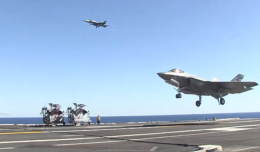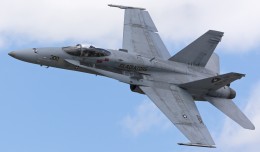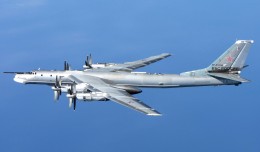The United States early Thursday morning successfully tested a hypersonic aircraft which will allow the U.S. military to strike targets anywhere in the world within an hour, the Pentagon confirmed on Friday.

DARPA HTV-2, a similar hypersonic weapon under development.
The Pentagon said the Advanced Hypersonic Weapon (AHW) glide vehicle was launched from the Pacific Missile Range Facility in Kauai County, Hawaii at 1.30 a.m. local time on Thursday. It later hit its target, the Reagan Test Site on Kwajalein Atoll, in the Pacific Ocean.
“The objective of the test is to collect data on hypersonic boost-glide technologies and test range performance for long-range atmospheric flight,” the Pentagon said in a statement. “Mission emphasis is aerodynamics; navigation, guidance, and control; and thermal protection technologies.”
The Pentagon said a three-stage booster system launched the AHW glide vehicle and successfully deployed it on the desired flight trajectory. “The vehicle flew a non-ballistic glide trajectory at hypersonic speed to the planned impact location at the Reagan Test Site,” it said. “Space, air, sea, and ground platforms collected vehicle performance data during all phases of flight.”
The AHW program is managed by the U.S. Army Space and Missile Defense Command and is part of the “Prompt Global Strike” program. The program will allow the U.S. military to deliver a precise weapon strike anywhere in the world in less than 60 minutes.
On August 11, the U.S. military unsuccessfully launched the Hypersonic Technology Vehicle 2 (HTV-2) from the Vandenberg Air Force Base in California. The HTV is part of the “Prompt Global Strike” program but has a larger reach than the AHW.
Contact with the HTV-2 was lost after an Air Force Minotaur IV rocket inserted it into the desired trajectory. Separation of the vehicle was confirmed by a rocket cam and the aircraft transitioned to Mach 20 (15,200 miles or 24,500 kilometers per hour) before it failed.
The prototype HTV-2 aircraft had its first test flight on April 22, 2010, when telemetry assets also experienced a loss of signal from the aircraft. The Pentagon has invested nearly $240 million in the “Prompt Global Strike” program this year, including some $69 million for Thursday’s test.







